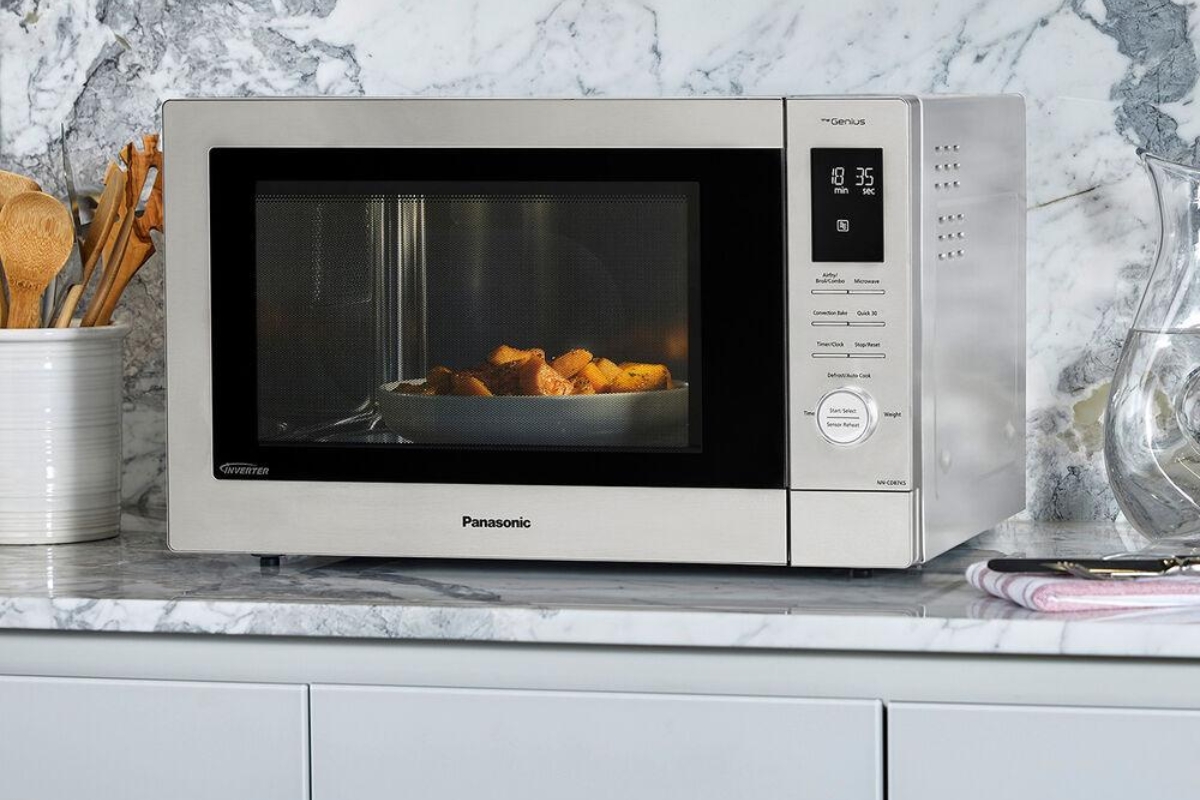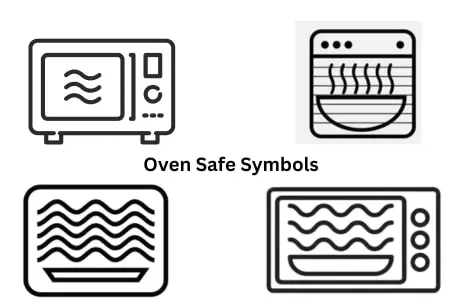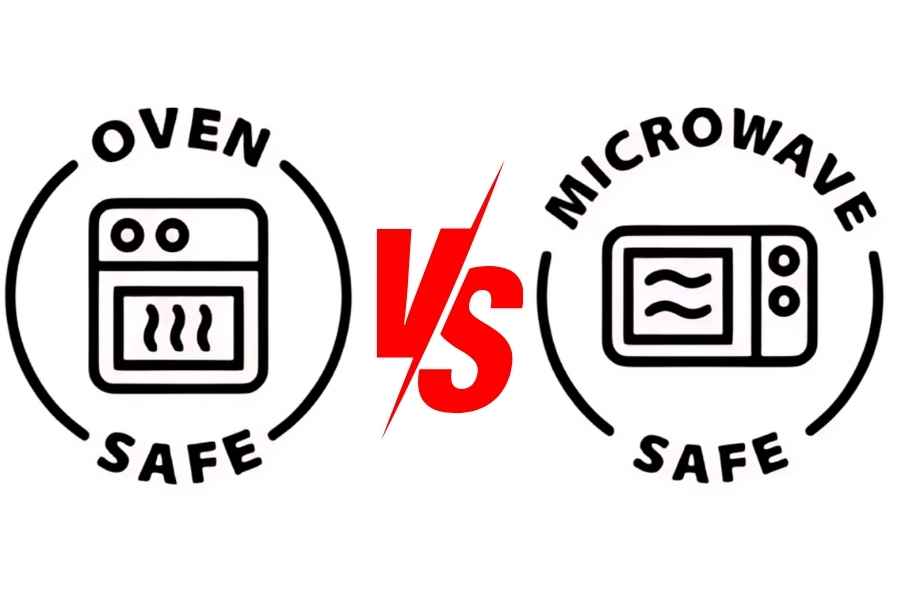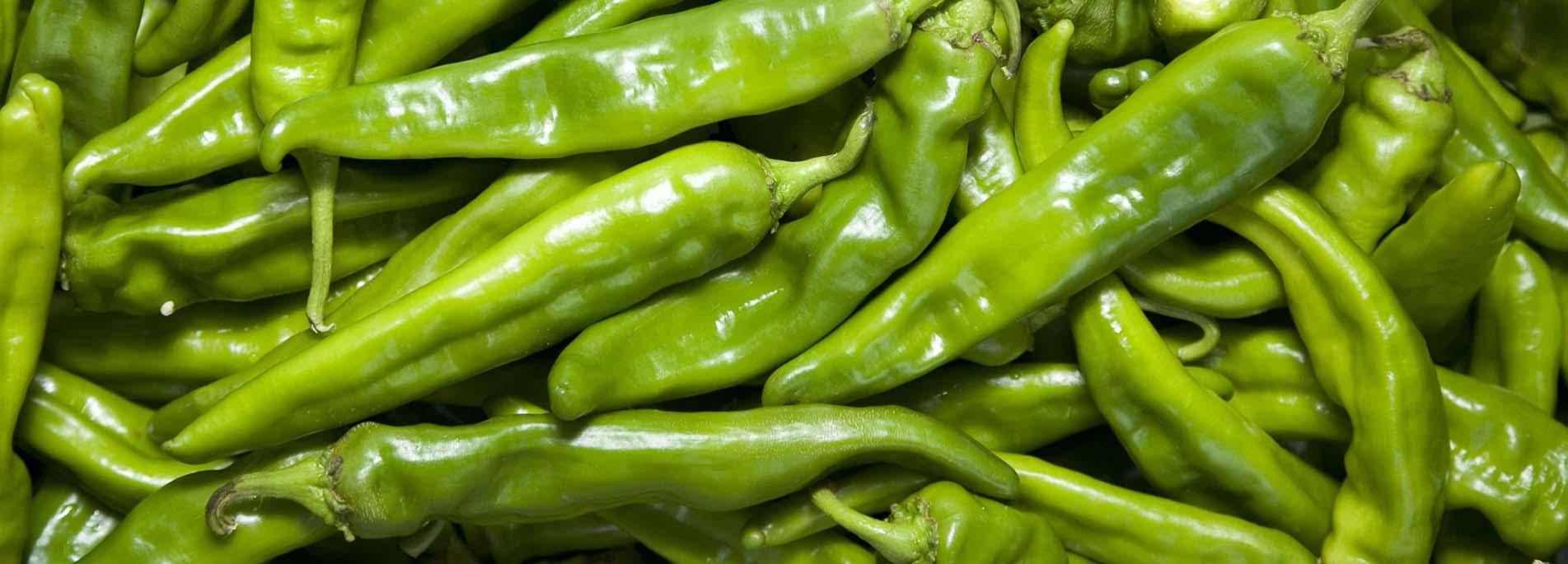Dishwashers have become a game-changer in our kitchens, saving us time and effort. But, not all items are created equal when it comes to dishwashing. I’ve learned this the hard way—after tossing a beautiful wooden spoon into the dishwasher without realizing it was not meant to be washed this way. The result? A cracked handle and a ruined kitchen tool.
This is where understanding the “not dishwasher safe symbol” becomes crucial. Certain materials, such as wood, aluminum, and some plastics, should never be put in the dishwasher. These materials can easily be damaged by the high heat, pressure, and harsh detergents used during a dishwasher cycle. Knowing the not dishwasher safe symbol helps you avoid those frustrating mistakes and keeps your cookware intact.
In this post, I’ll break down the “not dishwasher safe symbol”, explain why some items should be kept out of the dishwasher, and offer tips on how to properly care for those items.
Table of Contents
ToggleWhat Does the Not Dishwasher Safe” Symbol Look Like?
The “not dishwasher safe symbol” is easy to recognize once you know what to look for. Most often, this symbol features a crossed-out dishwasher icon. You’ll see a dishwasher with a diagonal line running through it, indicating that the item should never be placed in the dishwasher.
You may also see text warnings, such as “hand wash only” or “do not machine wash,” alongside the symbol. These are additional clarifications to help you avoid mistakes. Some cookware or plastic containers may include both the symbol and text, providing clear instructions on how to care for them.
This symbol usually appears on the bottom of items like wooden spoons, aluminum pots, or fine china. If you see it, avoid the dishwasher, as the item is most likely too delicate for the dishwasher’s heat and detergent.

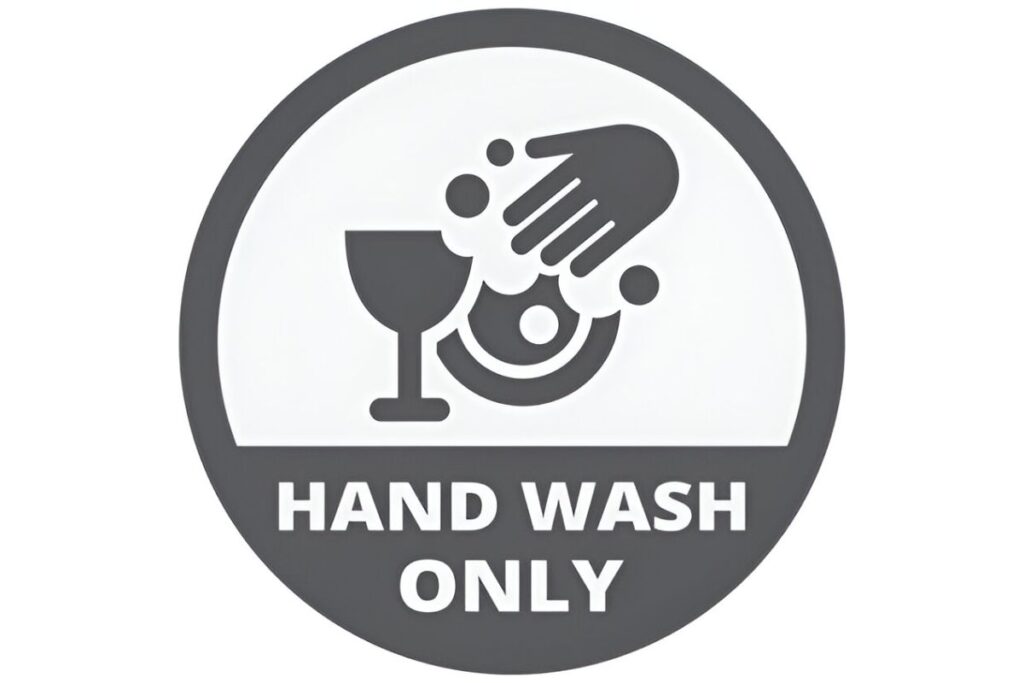
Symbols with Warnings or Instructions
Some items go the extra mile with additional instructions or symbols to guide you on how to care for them. For example:
- “Top rack only”: Indicates that the item can only be placed in the top rack of the dishwasher, where the heat and spray are gentler.
- Temperature limits: Some items may include maximum temperature recommendations to help prevent damage.
In my experience, I always check the packaging or the product label carefully if I see a hand wash only symbol. Even if the symbol is faded or unclear, it’s always safer to hand wash than risk damage.
Materials and Items That Should Never Go in the Dishwasher
Wooden Items
One of the most common items that carries the “not dishwasher safe symbol” is wooden cookware like spoons, cutting boards, and bowls. Wooden items should never be placed in the dishwasher because:
- Heat and water pressure can cause the wood to crack, warp, or split.
- Wooden handles on cookware, like knives or cast iron pans, can become loose or break off after repeated dishwasher cycles.
I’ve had my fair share of wooden utensils damaged by the dishwasher. Since then, I’ve always made sure to wash them by hand. I also recommend using wood conditioner after washing to help maintain their durability.
Aluminum Cookware
Another material that should never be placed in the dishwasher is aluminum. Whether it’s a baking sheet, pot, or pan, aluminum cookware tends to react poorly to the dishwasher’s heat and detergent. Over time, exposure to the dishwasher can cause oxidation, discoloration, and pitting in the aluminum. This leaves your cookware looking worn and old, even if it’s still functional.
For example, I once placed an aluminum roasting pan in the dishwasher, and it came out with a dull, pitted surface. To maintain the longevity of aluminum cookware, always hand wash it with warm water and mild detergent.
Delicate or Decorative Cookware
You’ll also find the “not dishwasher safe symbol” on items like fine china, decorative plates, and non-stick pans. While some non-stick pans may be dishwasher safe, many are not, especially those with a delicate coating that can wear off in the dishwasher.
The high heat and harsh detergent in a dishwasher can damage decorative ceramics or hand-painted designs. These items should be hand washed to protect their appearance and integrity. Even with dishwasher safe symbols, I always double-check the labels on my delicate dishes to avoid damaging the intricate designs.
Read my in depth guides on
How to Handle Non-Dishwasher Safe Items
Proper Handwashing Techniques
When it comes to non-dishwasher safe cookware, handwashing is your best option. It’s important to use the right methods to prevent damage and ensure the item’s longevity. Here are some tips I follow to properly wash non-dishwasher safe items like wooden spoons, cast iron pans, and aluminum cookware:
- Use warm water: Never soak wooden utensils or cookware for long periods. The wood will absorb water, causing it to swell or crack. Instead, use warm water with a mild detergent to clean the surface.
- Gentle scrubbing: For non-stick pans or decorative ceramic items, use a soft sponge or brush to avoid scratching the surface. Avoid using abrasive materials that can damage the finish.
- Dry thoroughly: After cleaning, dry the item immediately with a soft cloth. For wooden items, it’s important to wipe them down thoroughly to prevent water from being absorbed. Leaving them damp may lead to mold or damage.
- Condition when necessary: For wooden utensils or cutting boards, I apply a wood conditioner or mineral oil to keep them from drying out or cracking. This step is essential for maintaining the wood’s integrity over time.
By taking care of non-dishwasher safe items properly, you can preserve their quality and avoid unnecessary damage. Even though handwashing takes more time, it’s worth it to keep your cookware looking and functioning its best.
Drying and Storing Non-Dishwasher Safe Cookware
Once your non-dishwasher safe items are cleaned, proper drying and storage are key to maintaining their durability. Here’s what I do to keep my wooden cutting boards, aluminum pans, and fine china in great condition:
- Dry thoroughly: Always dry wooden and aluminum items right away using a clean towel. Never air-dry wooden items, as this can cause warping and splitting. For aluminum, leave it out for a short time and then wipe it down to remove excess moisture.
- Avoid extreme temperatures: When storing, keep items like cast iron or aluminum pans in cool, dry places. Avoid storing them in areas with high humidity or heat, as these can affect the material over time.
- Use protective storage: For fine china or decorative cookware, I recommend using felt pads or linen liners to prevent scratching. Keep these items in dish cabinets with enough space to avoid chipping or cracking.
Taking a few extra minutes to properly store your non-dishwasher safe cookware can help prevent long-term damage. Proper storage reduces the risk of scratches, cracks, or oxidation, keeping your items looking beautiful for years.
Best Practices for Handwashing Non-Dishwasher Safe Cookware
While it’s great to know the right cleaning techniques, it’s equally important to use best practices when handling non-dishwasher safe cookware. Over the years, I’ve perfected a few habits that help ensure my wooden spoons, aluminum pans, and non-stick pots stay in top shape:
- Use mild dish soap: For wooden items, always choose mild, non-abrasive soap to prevent stripping the natural oils from the wood. I’ve found that eco-friendly soaps are gentle on my cookware and safe for delicate materials.
- Avoid soaking: Soaking items like wooden boards or non-stick pans for long periods can weaken them. Instead, clean them immediately after use and wipe away food residue with a soft cloth or sponges.
- Regularly oil wooden items: For wooden utensils or cutting boards, oiling them with mineral oil or beeswax will prevent them from drying out or cracking. I usually do this once a month to keep them conditioned.
- Use a gentle scrubber: Avoid using harsh scrubbers on non-stick surfaces or fine ceramics. Opt for soft sponges or brushes to remove grease without damaging the coating.
By incorporating these best practices, your non-dishwasher safe cookware will stay in great condition for years, allowing you to continue enjoying its use without worrying about premature wear or damage.
FAQs
What is the symbol for not dishwasher safe?
The not dishwasher safe symbol typically features a dishwasher icon with a diagonal line crossing through it. This symbol means the item should never be placed in the dishwasher, as it could lead to damage or degradation.
How do I know if my cookware is not dishwasher safe?
Look for the “not dishwasher safe” symbol, which usually includes a crossed-out dishwasher icon. Additionally, many items will be labeled with “hand wash only” or “do not machine wash” for clarity.
Can I wash wooden items in the dishwasher?
No, wooden items, such as spoons and cutting boards, should not be placed in the dishwasher. The heat and water pressure can cause wood to crack, warp, or split. Always hand wash wooden kitchenware to maintain its integrity.
Why is aluminum cookware marked as not dishwasher safe?
Aluminum cookware is often marked “not dishwasher safe” because the high heat and detergents can cause oxidation, discoloration, and pitting. To maintain its appearance and quality, hand wash aluminum items with mild soap.
What happens if I put non-dishwasher safe cookware in the dishwasher?
If you put non-dishwasher safe cookware in the dishwasher, it may warp, crack, or lose its coating. Some items, like wooden spoons or fine china, can even break due to the harsh heat and detergents used in the machine.
Are non-stick pans safe to wash in the dishwasher?
Most non-stick pans are not dishwasher safe because the detergent and high heat can damage the non-stick coating. Always check the manufacturer’s instructions, but it’s generally best to hand wash non-stick cookware to preserve its performance.
How should I clean fine china or decorative plates that are not dishwasher safe?
For fine china or decorative plates, always hand wash them using mild dish soap and warm water. Avoid harsh scrubbing, and dry them with a soft cloth. Proper care will help maintain their beauty and prevent cracking.
Related Guides



